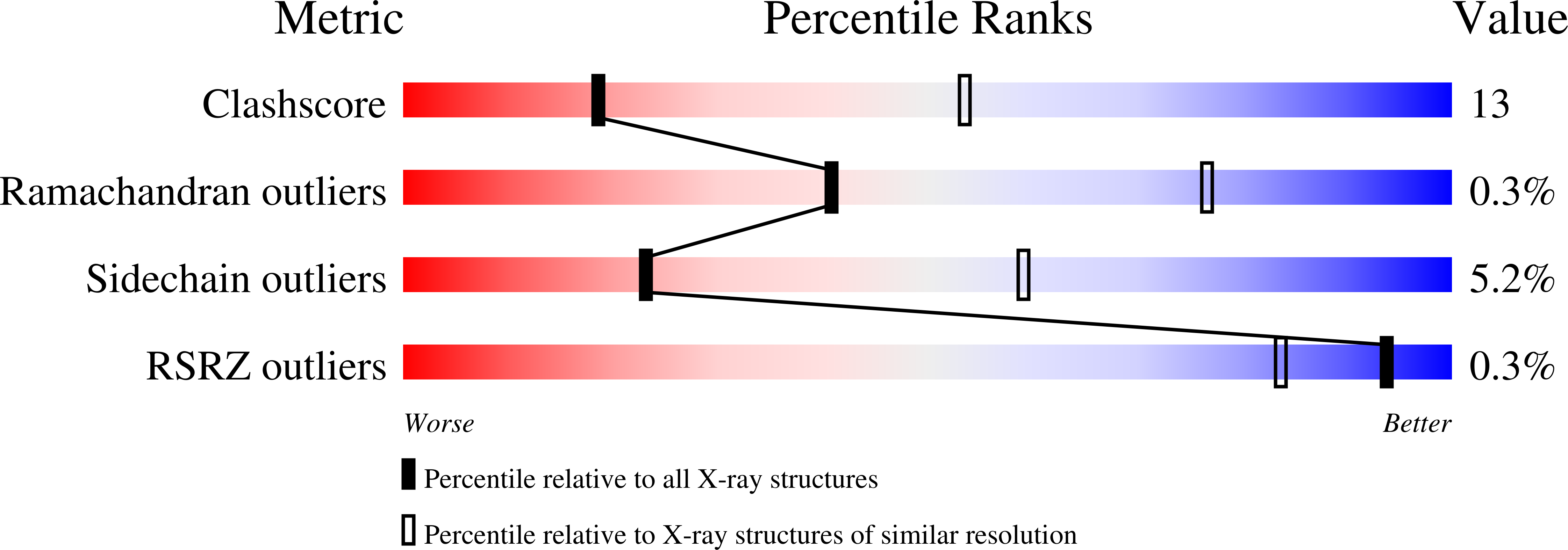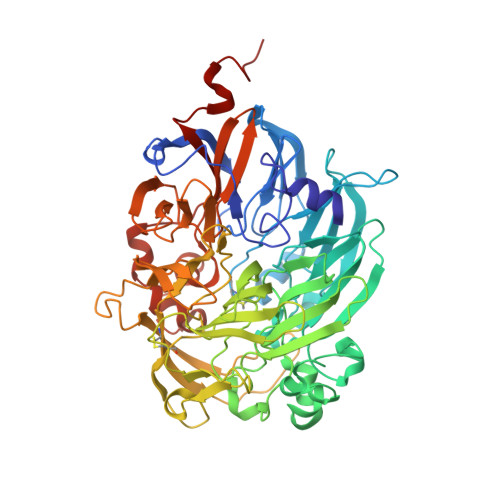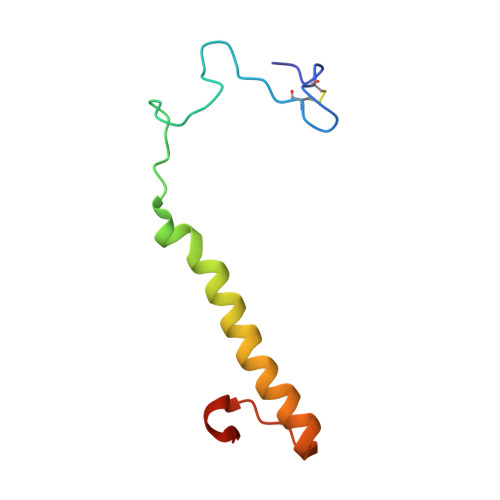Site-Directed Mutagenesis and X-Ray Crystallography of the Pqq-Containing Quinoprotein Methanol Dehydrogenase and its Electron Acceptor, Cytochrome C(L)(,)
Afolabi, P.R., Mohammed, F., Amaratunga, K., Majekodunmi, O., Dales, S.L., Gill, R., Thompson, D., Cooper, J.B., Wood, S.P., Goodwin, P.M., Anthony, C.(2001) Biochemistry 40: 9799-9809
- PubMed: 11502173
- DOI: https://doi.org/10.1021/bi002932l
- Primary Citation of Related Structures:
1H4J - PubMed Abstract:
Two proteins specifically involved in methanol oxidation in the methylotrophic bacterium Methylobacterium extorquens have been modified by site-directed mutagenesis. Mutation of the proposed active site base (Asp303) to glutamate in methanol dehydrogenase (MDH) gave an active enzyme (D303E-MDH) with a greatly reduced affinity for substrate and with a lower activation energy. Results of kinetic and deuterium isotope studies showed that the essential mechanism in the mutant protein was unchanged, and that the step requiring activation by ammonia remained rate limiting. No spectrally detectable intermediates could be observed during the reaction. The X-ray structure, determined to 3 A resolution, of D303E-MDH showed that the position and coordination geometry of the Ca2+ ion in the active site was altered; the larger Glu303 side chain was coordinated to the Ca2+ ion and also hydrogen bonded to the O5 atom of pyrroloquinoline quinone (PQQ). The properties and structure of the D303E-MDH are consistent with the previous proposal that the reaction in MDH is initiated by proton abstraction involving Asp303, and that the mechanism involves a direct hydride transfer reaction. Mutation of the two adjacent cysteine residues that make up the novel disulfide ring in the active site of MDH led to an inactive enzyme, confirming the essential role of this remarkable ring structure. Mutations of cytochrome c(L), which is the electron acceptor from MDH was used to identify Met109 as the sixth ligand to the heme.
Organizational Affiliation:
Division of Biochemistry and Molecular Biology, School of Biological Sciences, University of Southampton, Southampton SO16 7PX, UK.

















